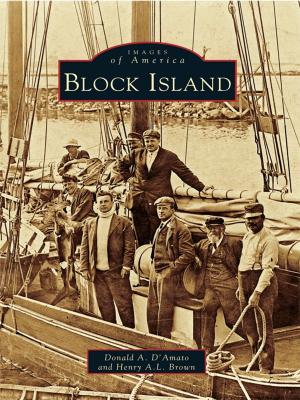| Author: | Vernonia Pioneer Museum Association | ISBN: | 9781439640111 |
| Publisher: | Arcadia Publishing Inc. | Publication: | February 1, 2010 |
| Imprint: | Arcadia Publishing | Language: | English |
| Author: | Vernonia Pioneer Museum Association |
| ISBN: | 9781439640111 |
| Publisher: | Arcadia Publishing Inc. |
| Publication: | February 1, 2010 |
| Imprint: | Arcadia Publishing |
| Language: | English |
Nestled in the Upper Nehalem Valley in the foothills of the Oregon Coast Range, Vernonia still reflects its pioneer virtues of hard work and independence. The area was first homesteaded in 1874 by Clark Parker and John Van Blaricom. The earliest settlers saw the dense old-growth firs and cedars as an obstacle to overcome in establishing farms, but those big trees soon became the lifeblood of the town�s economy. Incorporated in 1891, Vernonia remained a small settlement with family-run farms, sawmills, and supporting businesses until the arrival of the long-awaited railroad in 1922. The Oregon-American Lumber Mill�at the time one of the largest of its kind�was built in 1923. The mill provided jobs and business opportunities for hundreds of people until 1957 when it closed. The population rapidly declined as people left to find work elsewhere. Vernonia has proved resilient, however, and continues to be home to over 2,000 residents who appreciate small-town life in a forested setting.
Nestled in the Upper Nehalem Valley in the foothills of the Oregon Coast Range, Vernonia still reflects its pioneer virtues of hard work and independence. The area was first homesteaded in 1874 by Clark Parker and John Van Blaricom. The earliest settlers saw the dense old-growth firs and cedars as an obstacle to overcome in establishing farms, but those big trees soon became the lifeblood of the town�s economy. Incorporated in 1891, Vernonia remained a small settlement with family-run farms, sawmills, and supporting businesses until the arrival of the long-awaited railroad in 1922. The Oregon-American Lumber Mill�at the time one of the largest of its kind�was built in 1923. The mill provided jobs and business opportunities for hundreds of people until 1957 when it closed. The population rapidly declined as people left to find work elsewhere. Vernonia has proved resilient, however, and continues to be home to over 2,000 residents who appreciate small-town life in a forested setting.















